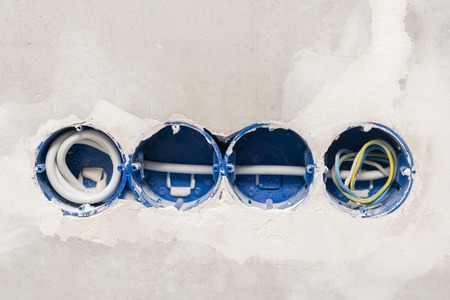Introduction to Electrical Safety Checks in the UK
Electrical safety checks have become an integral part of maintaining British homes and businesses, reflecting both practical necessity and a deep-rooted cultural emphasis on safety and well-being. In the UK, routine inspections are not just a matter of best practice—they are enshrined in legislation such as The Electrical Safety Standards in the Private Rented Sector (England) Regulations 2020, which mandate regular checks for rental properties. These measures are designed to protect residents and property from hazards like electrical fires, shocks, and equipment failure. From Victorian townhouses to contemporary office spaces, Britons recognise that their unique architectural heritage often conceals ageing wiring or outdated installations, heightening the need for vigilance. Regular safety inspections provide peace of mind, ensuring compliance with current standards while nurturing a culture where proactive care for one’s living or working environment is highly valued. Through these checks, homeowners and business operators alike are empowered to address faults before they escalate—preserving both aesthetic harmony and the integrity of cherished British spaces.
Frequent Electrical Faults Uncovered
During routine safety checks across UK homes and commercial spaces, certain electrical faults are uncovered with remarkable regularity. These issues not only compromise aesthetic harmony but also pose significant safety risks if left unresolved. Understanding these common problems is key to maintaining both the elegance and security of your interior environment. Below, we delve into the typical electrical faults discovered during UK inspections, highlighting their nature and potential solutions.
Overview of Common Electrical Faults in the UK
| Fault Type | Description | Potential Risks |
|---|---|---|
| Outdated Wiring | Many properties, especially period homes, still rely on old wiring systems such as rubber or fabric-insulated cables. | Fire hazard, inefficient power delivery, failure to meet current regulations |
| Overloaded Sockets | Excessive use of multi-plug adapters or extension leads at a single outlet is prevalent in modern households. | Overheating, risk of electrical fires, circuit tripping |
| Faulty RCDs (Residual Current Devices) | RCDs designed to prevent electric shocks may be defective or absent in older installations. | Lack of shock protection, increased injury risk |
| Deteriorating Consumer Units | Main fuse boards or consumer units may show signs of wear, outdated components, or lack essential safety features. | Poor circuit protection, non-compliance with British Standards |
In-Depth: Key Issues Explained
Outdated Wiring
The charm of classic British architecture often masks hidden dangers within its walls. Outdated wiring struggles under the demands of contemporary appliances and lighting schemes. Tell-tale signs include flickering lights, discoloured sockets, or a persistent burning smell. Upgrading to modern PVC-insulated wiring ensures both compliance and longevity for your space’s design integrity.
Overloaded Sockets
Increasing gadgetry means more plugs than ever vying for limited socket space. While plug-in extensions seem convenient, they disrupt the flow of a well-curated room and threaten safety. Regularly check for heat around sockets and avoid daisy-chaining extension leads. Consider having additional sockets installed by a qualified electrician to maintain both functionality and visual clarity.
Faulty RCDs
An RCD is essential for quickly disconnecting power during faults. A faulty or missing RCD puts occupants at unnecessary risk. Monthly testing—simply pressing the test button—helps ensure ongoing protection. For properties without an RCD, retrofitting one is a vital upgrade that blends seamlessly into modern consumer units while enhancing peace of mind.
Deteriorating Consumer Units
The consumer unit acts as the heart of your property’s electrical system. Ageing units can fail to protect against overloads or short circuits and may lack necessary labelling. Modern replacements offer stylish profiles with enhanced safety features like individual circuit breakers and integrated surge protection, aligning safety with design finesse.

3. Telltale Signs of Electrical Problems
Spotting the subtle, and sometimes not-so-subtle, signs of electrical issues is an essential part of any UK safety check. In homes across Britain, from charming Victorian terraces to sleek new builds, certain clues often betray underlying faults long before they become hazardous. Recognising these signals not only helps maintain a home’s ambience but also preserves its quintessential British character.
Visual Cues: What to Look For
Start by observing your surroundings with a designer’s eye—notice if lights flicker or dim inexplicably, particularly when using multiple appliances. This could indicate overloaded circuits or loose wiring behind those tastefully painted walls. Blackened switches or discoloured sockets are red flags, hinting at overheating that may mar the harmony of your living space.
Sensory Clues: Trust Your Senses
The British home is known for its comforting scents—freshly brewed tea or Sunday roast—but a peculiar burning smell or acrid odour near outlets should set alarm bells ringing. These sensory cues often suggest insulation breakdown or faulty connections hidden within the walls’ intricate framework. Likewise, feeling a warm switch plate or socket is a sign that something is amiss beneath the surface.
The Sound of Trouble
In hushed British interiors, the faint buzzing or crackling from fittings can be surprisingly telling. These sounds may signal loose wires or failing components—a reminder that beauty in design must always be underpinned by safety in function.
Recognising these visual and sensory cues not only preserves the aesthetic integrity of your space but safeguards what makes a British home truly special: its inviting comfort and timeless charm.
4. DIY Fixes for Minor Faults
When it comes to straightforward electrical issues discovered during UK safety checks, homeowners can often remedy minor faults themselves, provided they follow proper safety protocols and use suitable tools. Its essential to always switch off the mains power at the consumer unit before attempting any work and to ensure hands are dry and tools are insulated. Below is a practical guide to common minor faults and safe, do-it-yourself fixes:
Common Minor Electrical Faults & DIY Solutions
| Fault | DIY Solution | Essential Tools |
|---|---|---|
| Tripped Circuit Breaker | Turn off all affected appliances, reset the breaker by switching it fully off and back on. If it trips again, seek professional help. | None required |
| Blown Fuse in Plug | Unplug the appliance, remove the plug cover, replace the blown 3A or 13A fuse with a BS1362 approved fuse of the correct rating. | Screwdriver, Replacement fuse (BS1362) |
| Loose Light Switch Faceplate | Switch off power at consumer unit, tighten screws on faceplate without over-tightening to avoid cracking. | Insulated screwdriver |
| Lamp Not Working | Try a new bulb first; if still faulty, check plug fuse as above or inspect for loose wiring in lamp holder (with power off). | Replacement bulb, Screwdriver if needed |
Safety Protocols to Follow
- Always double-check that the circuit you’re working on is dead using a UK-approved voltage tester.
- Avoid working in damp conditions or using wet hands.
- If any wiring appears burnt, melted, or if there’s a burning smell, do not attempt repair—call a qualified electrician immediately.
Knowing When to Call a Professional
If you encounter persistent tripping circuits, flickering lights across several rooms, or discover signs of overheating and scorch marks around sockets, these are clear indicators that professional intervention is required. In accordance with UK regulations (Part P of Building Regulations), certain electrical works must be carried out by a registered electrician for your own safety and to remain compliant with local laws.
5. When to Call a Registered Electrician
While many common electrical faults identified during UK safety checks may seem approachable for a confident DIYer, it is crucial to recognise when professional intervention is not just advisable, but necessary. Some issues carry significant risks, both legally and for your household’s safety. Attempting to fix certain faults yourself can void home insurance, breach building regulations, or even result in serious injury.
Recognising High-Risk Electrical Faults
Certain warning signs should always prompt you to contact a registered electrician. These include persistent tripping of circuit breakers or RCDs, any evidence of burning smells from sockets or consumer units, visible scorch marks, buzzing noises from wiring or outlets, and repeated power outages affecting specific circuits. If you encounter exposed wires or suspect any electrical installation is outdated—such as the presence of old fuse boxes or fabric-insulated cables—do not attempt repairs yourself.
The Importance of Professional Accreditation
In the UK, only electricians registered with recognised bodies like NICEIC (National Inspection Council for Electrical Installation Contracting) or NAPIT (National Association of Professional Inspectors and Testers) are fully compliant with British Standards and Part P building regulations. These professionals bring peace of mind: their work is routinely inspected, insured, and guaranteed to meet rigorous safety criteria. Engaging a registered electrician ensures any remedial work is certified and logged—a vital consideration if you plan to sell your property or need to claim on your insurance.
Summary: Safety First
DIY enthusiasm has its limits, especially when dealing with the invisible dangers of electricity. For anything beyond simple tasks like changing a bulb or resetting a breaker, always consult an accredited local expert. Not only will this safeguard your home and family, but it will also preserve the integrity and value of your property in accordance with UK standards.
6. Preventative Measures for a Safer Home
Proactive design-led strategies not only enhance the visual appeal of your living space but also ensure lasting electrical safety throughout UK homes. By seamlessly integrating preventative measures, you can create an environment that is both secure and beautifully curated.
Routine Maintenance as a Design Ritual
Embrace regular electrical inspections as part of your homes seasonal routine. Schedule annual checks with a certified electrician to identify issues before they escalate. Consider stylish wall calendars or smart reminders to subtly blend this vital task into your home’s aesthetic, making safety a natural extension of your interior rhythm.
Contemporary Protective Covers
Upgrade traditional socket and switch covers with modern, flame-retardant designs that complement your décor. Opt for brushed metal finishes, matte pastels, or minimalist glass covers—these can protect vulnerable points while elevating your interior scheme. In family homes, childproof designs add another layer of security without compromising style.
Integrating Modern Safety Gadgets
Fuse safety with innovation by installing advanced gadgets like smart circuit breakers, RCDs (Residual Current Devices), and surge protectors. Many contemporary models feature sleek lines and subtle profiles, blending effortlessly into British interiors. Smart home systems can alert you to electrical anomalies in real time—an elegant fusion of technology and peace of mind.
Lighting the Way Forward
Consider updating lighting fixtures to include LED bulbs with built-in surge protection or automated shut-off features. These not only reduce energy consumption but also mitigate risks associated with overheating or short circuits. Choose fixtures that mirror current UK design trends—think industrial chic pendants or heritage-inspired sconces—for a harmonious marriage of function and form.
By thoughtfully weaving these preventative measures into your home’s design narrative, you champion both beauty and safety—a hallmark of modern British living.
7. Conclusion: The Value of Proactive Electrical Care
Regular electrical safety checks are far more than a tick-box exercise; they represent an ongoing commitment to the wellbeing of both your home and its inhabitants. In the context of British living spaces, where period properties meet contemporary comforts, routine inspections play a pivotal role in maintaining both character and functionality. By identifying and addressing common electrical faults early—be it ageing wiring, faulty sockets, or outdated consumer units—you safeguard against potential hazards while enhancing the everyday experience within your home.
The benefits of this proactive approach are manifold. Not only do regular checks minimise the risk of electrical fires and disruptions, but they also help preserve the architectural integrity and timeless charm that define so many UK residences. Professional attention ensures compliance with current regulations, future-proofs your property, and adds an extra layer of reassurance for homeowners and tenants alike.
Ultimately, investing in preventative care is an act of respect for your space—a way to honour its past and ensure its future remains bright and secure. Let electrical safety become part of your home’s ongoing story, quietly supporting the comfort and aesthetics that make British homes truly special.


